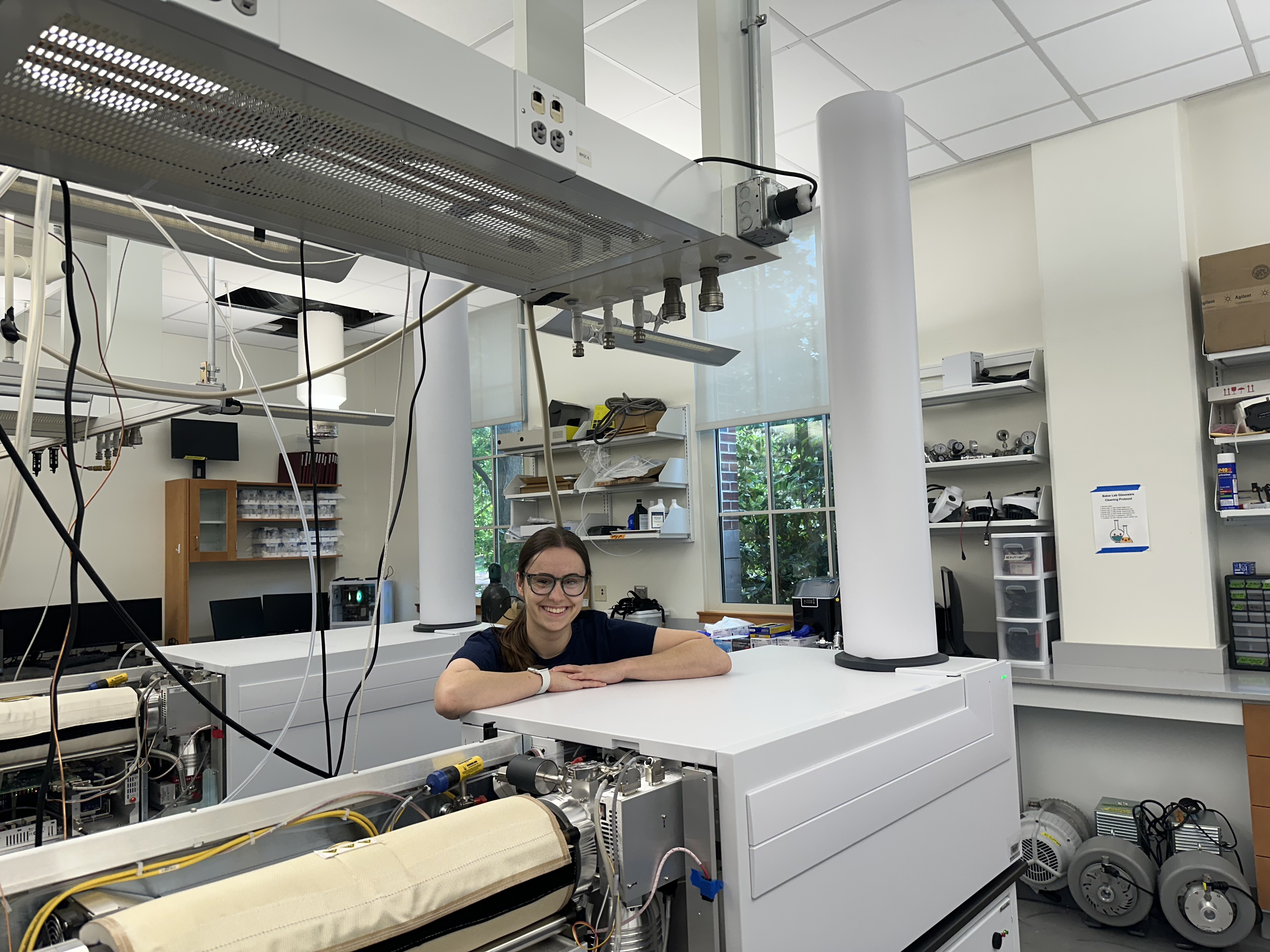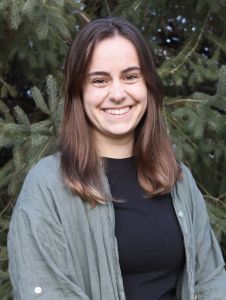NSF Honoree Blends Chemistry, Environmental Passion in Bid to Find Nanoplastics

Haley Jostes is proposing a new platform combining multiple sophisticated techniques, including size exclusion chromatography, supercritical fluid chromatography, ion mobility spectrometry and mass spectrometry, to better isolate and analyze nanoplastics from complex samples like river water or soil.

May 2, 2025 I By Dave DeFusco
Growing up surrounded by Minnesota’s 10,000 lakes, Haley Jostes was always aware of the importance of protecting the environment. Long before she became a Ph.D. student in chemistry at UNC-Chapel Hill, she was volunteering as a citizen water scientist, collecting and testing water samples to help monitor local watersheds.
“Taking care of our water systems was central to the communities I grew up in,” she said. “It’s something I’ve cared about for as long as I can remember.”
That passion for environmental health eventually led her to UNC’s Baker Lab, where she developed a research proposal that could open fresh frontiers in the study of plastic pollution. Her proposal was so impressive that it recently earned an honorable mention from the National Science Foundation’s Graduate Research Fellowship Program, an early mark of recognition for her potential to make a difference in the field.
Nanoplastics are incredibly tiny particles, smaller than a human hair and often invisible to the naked eye. While microplastics, which are larger particles, have been studied more extensively, nanoplastics are harder to detect and understand. They are so small they become challenging to evaluate using many traditional filtering and imaging techniques, making it difficult for scientists to even know how much is present in water, soil or living tissues, let alone what impacts they might be having.
To tackle this challenge, Jostes is proposing a new platform that combines multiple sophisticated techniques, including size exclusion chromatography (SEC), supercritical fluid chromatography (SFC), ion mobility spectrometry (IMS) and mass spectrometry (MS), to better isolate and analyze nanoplastics from complex samples like river water or soil.
Although coupling different instruments isn’t new for Jostes’ lab, using SFC instead of traditional liquid chromatography (LC) presents new hurdles. “In LC, you work with liquids, but SFC uses supercritical fluids; it’s different, and I haven’t worked with it before,” she said.
Still, Jostes feels confident because of her strong background in method development and instrument coupling, especially with LC techniques. Her Ph.D. advisor, Dr. Erin Baker, said she is a “very inquisitive student” with extensive experience in analytical separations.
“She has the ideal knowledge and curiosity for addressing this extremely difficult project,” said Dr. Baker, “and I cannot wait to see how she pushes this new research area forward for our lab to ultimately provide insight into a problem that has so many potential impacts on environmental and human health.”
One major decision Jostes faces is whether to couple all the separation steps directly, meaning everything would happen together or to run some parts separately first, such as using size exclusion chromatography offline before moving to SFC and IMS-MS analysis. Right now, she’s leaning toward keeping some steps separate to keep the project manageable and flexible.
“We’re going to have a learning curve,” she said. “But it’s exciting because we’re building something new from the ground up.”
Her proposed work isn’t just about detecting nanoplastics, it’s also about setting the stage for future studies on how these plastics might affect human health. Tiny plastic particles have already been found in blood, organs and even the brain in some studies, raising concerns about long-term impacts.
Before researchers can even begin studying those effects in living tissues, they need reliable tools to find and measure the plastics. “The first goal is just to get a technique that works well in simpler samples, like water,” she said. “If we can’t do that reliably, there’s no way we can move on to something more complicated like tissues.”
Once the platform is up and running, Jostes hopes it can eventually be adapted to help regulatory agencies, environmental researchers and health scientists better track nanoplastics in a wide range of environments. While the road ahead is full of technical challenges and unanswered questions, she is ready to dive in.
“Nanoplastics research is still in its infancy,” she said. “There’s a lot we don’t know yet. But being able to help lay the foundation for how we study them—that’s what makes this project so exciting.”

